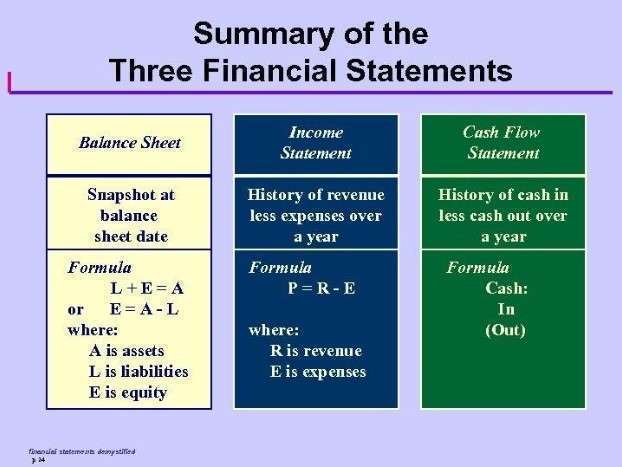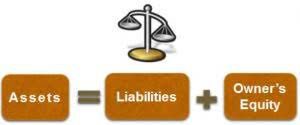
We go beyond standard accounting and bookkeeping services to offer winery-specific financial analysis. Our team of industry veterans dives deep into your financial data, analyzing key performance indicators such as farming cost winery accounting per acre and inventory turnover. These insights give you the confidence you need to make quick decisions to optimize your operations and maximize your cash flow. Navigating the maze of regulatory requirements and tax obligations is crucial for wineries to operate smoothly and avoid penalties.
Average Cost
It’s exacting work, and made worse by the often confusing overlap between overhead, production, and material costs. There’s a wide gulf between financial reporting and management account reporting. Financial reporting operates under GAAP guidelines and allows your company to remain compliant with policy boards. In contrast, management reporting analyzes department performance as well as its relationship to expenditures and returns on investment (ROI). In other words, management reports are the diagnostics on your winery’s financial health. Weighted Average Cost is a more generalized approach, calculating the average cost of all inventory items available for sale during the period.
See the benefits of winery accounting from Protea Financial
Many owners find that having real-time perpetual inventory quantity contribution margin and financial data invaluable—especially in the middle of a busy wine release when sale orders are high. They utilize enterprise resource planning (ERP) or other computer software to track inventory transactions as they occur. This means inventory volumes and values are automatically adjusted every time there is a sales or production transaction affecting inventory. Records must be kept for loss, leakage, and voluntary destruction quantities, because no tax will be charged on those amounts. Attempting to avoid payment of excise taxes for any reason, including the falsification of production levels or loss amounts, can result in the revocation of a winery’s permit. Join 500+ wine business owners in the know, getting the latest accounting news in the wine business.
Best Practices for Handling Billbacks

Businesses resistant to innovation will find themselves left behind, especially as wineries seek to establish presences in new regions or markets. Realizing new endeavors or creating new products and processes—such as methods to alleviate smoke exposure, reduce emissions, drive energy efficiency, and design new packaging—can come with significant costs to your operations. Leverage the power of IT solutions to help boost your operational efficiencies through access to comprehensive, synchronous views of your entire business. Illuminate vital data—like direct-to-consumer and wine club management, financial statistics, and personnel activities—to transform your business into a collaborative, data-driven organization. To keep your business moving forward, you need proactive strategies across your operations—from tax planning to sales and distribution, business transition, and acquisition and exit planning. Industry consolidation, competition, direct-to-consumer sales strategies, and risks around smoke exposure and climate change are rapidly shifting the wine industry landscape.
- In any case, the winery needs to track when, what kind of, and to whom wine was sold, and to pay excise taxes to the appropriate taxing authority.
- It’s also important that financial reporting disclosures provide transparency about inventory costing, methods, assumptions, and significant estimates.
- Inventory valuation determines the financial worth of a winery’s stock at any given time.
- If you’re considering hiring a bookkeeper to prepare your financial statements, be sure to know what to consider when selecting one.
- If, however, a winery is providing custom winemaking services to clients, a portion of the winemaking costs will be allocated from each cost center to the costs of custom winemaking services on the income statement.
- Deeply immersed within the wine industry, our professionals appreciate the nuances of your operations and challenges as many helped run, grow, and operate premiere wineries during their careers.
This reserve can be crucial for managing costs such as payroll, maintenance, and utilities when sales are slower. We deliver forward-thinking business solutions, taking time Bookstime to discern your unique business needs and anticipating how they may be impacted by the changing industry. We understand the operational challenges wineries face and essential success factors, such as compliance and regulatory issues, managing costs, building successful brands, and selling to consumers effectively. Adopting robust accounting practices in the wine industry offers numerous advantages that contribute to the overall success and sustainability of wineries.
Vape & Vine ─ Discovering the Harmony of Flavors in E-liquids and Wines
- This automation reduces the time spent on manual accounting tasks, allowing winery staff to focus on core business activities.
- Direct costs are those that can be directly attributed to the production of grapes, such as labor, fertilizers, and water.
- Accurate financial management is fundamental to running a thriving wine business.
- That production cost, which includes raw material inputs, direct labor, production supplies, and related overhead costs is recognized on the balance sheet as an addition to the cost of wine inventory.
- These tools offer features like real-time data analytics, automated reporting, and integration with other business systems, making it easier for vineyard managers to stay on top of their financials.
- From enhancing financial management to fostering informed decision-making and building trust with stakeholders, here are the key benefits of implementing best practices in wine industry accounting.
Wineries are a flourishing growth opportunity for accountants who are knowledgeable about the industry and can provide valuable financial, cost, tax, and risk management guidance. Understanding the unique needs of this expanding market sector will allow accountants to help winery owners live their dreams. Tax accounting for wineries involves managing excise taxes, sales taxes, and import/export taxes. Proper tax accounting ensures compliance with local and federal regulations, helps avoid penalties, and can optimize tax liabilities. Understanding tax obligations and benefits can significantly impact a winery’s financial health and operational efficiency.
What are the key components of wine accounting for a winery?
- In this article we provide an overview of how to calculate the cost of goods sold (COGS) and why it matters.
- By analyzing this integrated data, wineries can tailor their marketing strategies, improve customer satisfaction, and ultimately drive sales growth.
- If you operate a vineyard in addition to winery, include those labor expenses in your total labor cost.
- This method values inventory based on the average cost of all similar items available during the period.
- Protea provides services to take over the burdens and responsibilities of finding, managing, and training an accountant or bookkeeper for businesses and free up proprietors’ time, so they can focus on building their businesses.
- Another method is Last-In, First-Out (LIFO), which assumes that the most recently produced items are sold first.
As mentioned above, a significant number of wineries cost their wine using the SPID method for management purposes, then convert to LIFO for financial reporting and tax purposes. Changes to tax code in 2017 now allow expensing for many winemaking costs and therefore creating greater disparity between U.S. GAAP and tax-basis financial recordkeeping, so it’s useful to discuss this with your CPA. We will not only help you get the most return on your taxes, but we’ll also be there with you as an ongoing business partner and confidant. Our team at C&D specialize in agriculture accounting and have served wine business owners in Central California and the Napa Valley for years. Our clients range from small boutique vineyards to wineries that sell over 100,000 cases annually.

Inventory.

Like any other business, the wine industry must also analyze and report its finances timely. This is essential for proper decision-making and evaluation of the company’s performance. If you’re also struggling with numbers, go over this article to learn more about the wine industry’s accounting complications.



